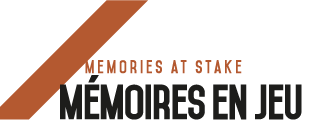The Holocaust left a tremendous impact on the urban and rural landscape of former Galicia. But places where Jews lived and died were often left abandoned, unmarked, if not looted and desecrated. What do we see today when looking at these places where only ruins are left, and where the past was often eradicated? Photographers have attempted to capture the invisible. Pictures taken by Chris Schwarz, Jason Francisco and Ansgar Gilster show how the present and
the past continue to intermingle and interact in these contaminated landscapes.
Key words: landscape, memory, traces, Galicia, Holocaust.
ŒUVRES CITÉES
Baer, Ulrich, 2002, Spectral evidence: The Photography of Trauma, Cambridge, MA, MIT Press.
Dorfman, Rivka & Ben-Zion, 2000, Synagogues without Jews, Philadelphia, JPS.
Francisco, Jason, 2014, An Unfinished Memory: Jewish Heritage and the Holocaust in Eastern Galicia, Cracovie, Galicia Jewish Museum.
Pollack, Martin, 2014, Kontaminierte Landschaften, St. Pölten, Residenz Verlag.
Schlögel, Karl, 2003, Im Raume lesen wir die Zeit, Munich, Hanser.
Sturdy Colls, Caroline, 2011, Holocaust Archeology: Archeological Approaches to Landscapes of Nazi Genocide and Persecution, Doctorat, University of Birmingham.
Webber, Jonathan & Schwarz, Chris, 2009, Discovering Traces of Memory: The Jewish Heritage of Polish Galicia, Cracovie, Galicia Jewish Museum.
SITES
https://www.erinnerungbewahren.de, http://www.protecting-memory.org
